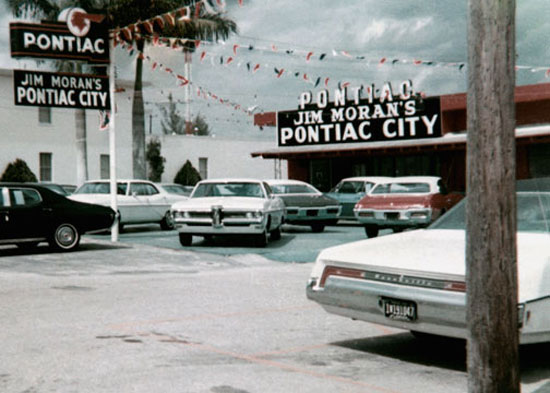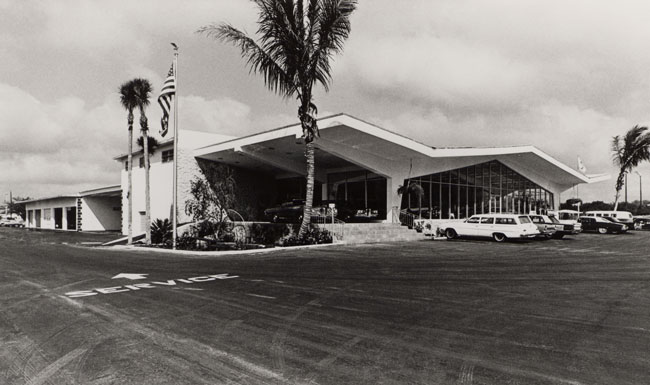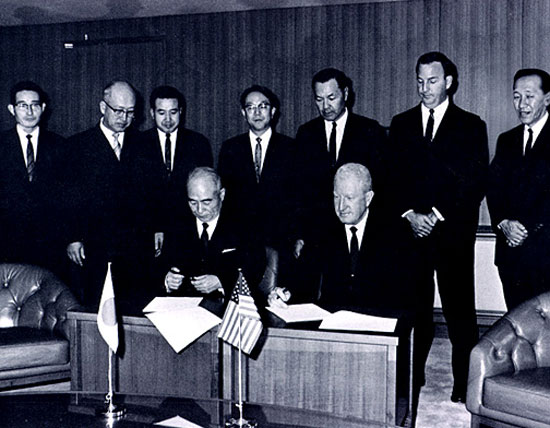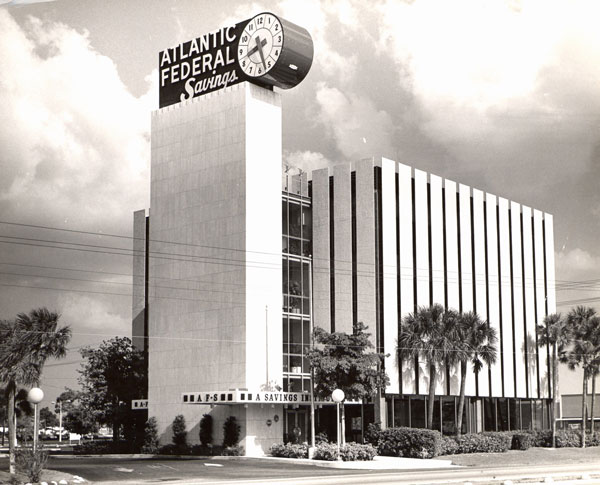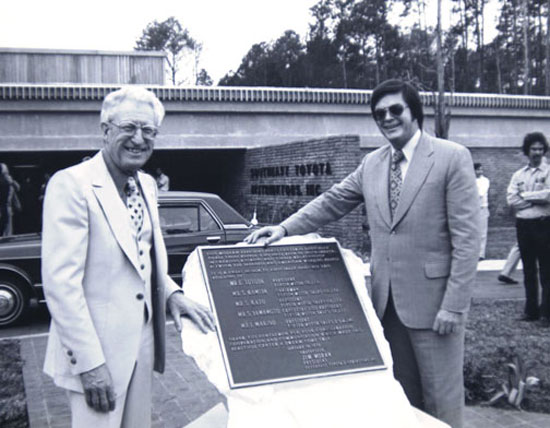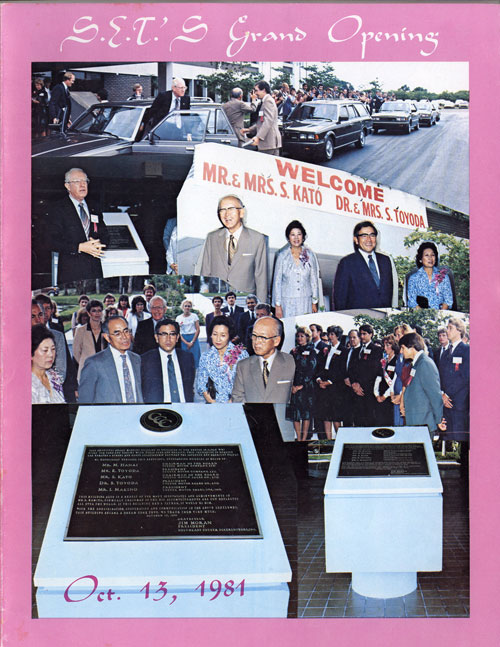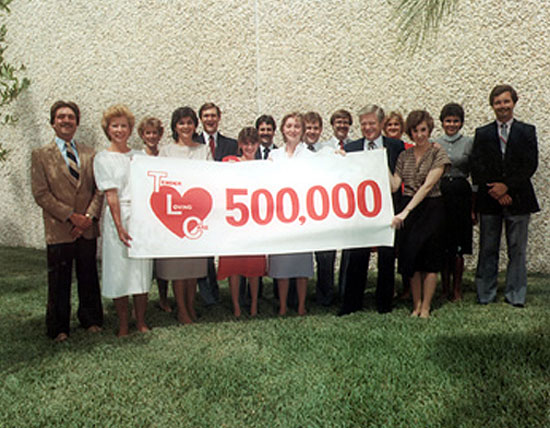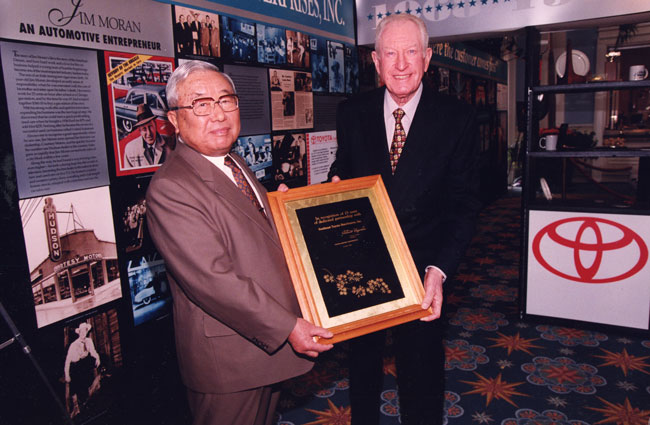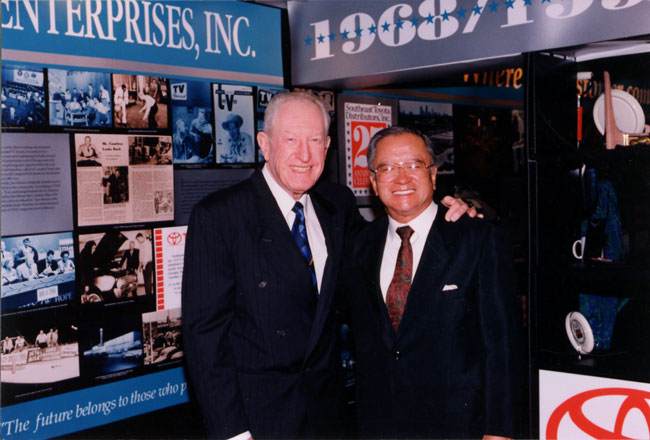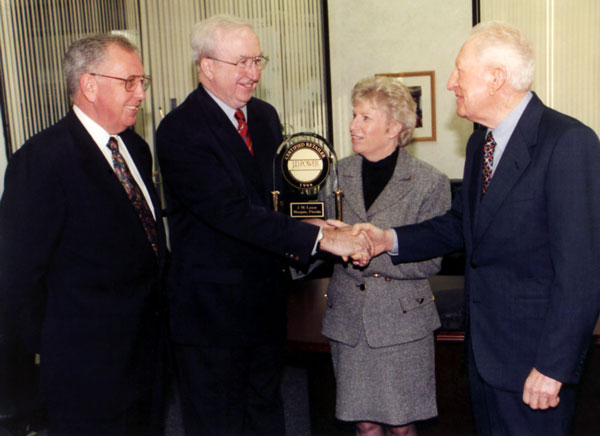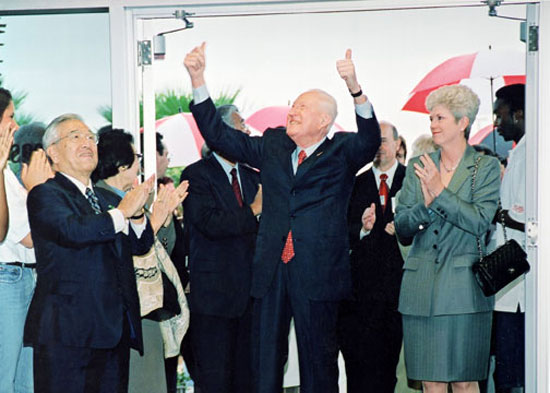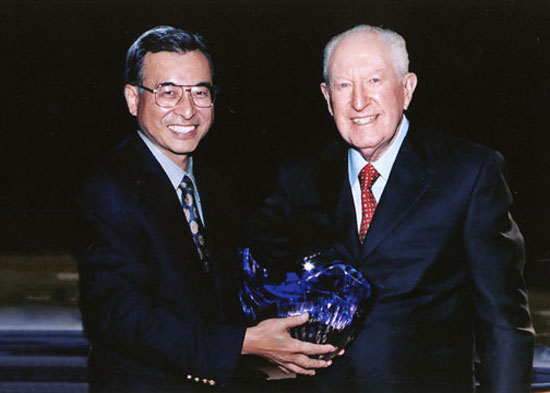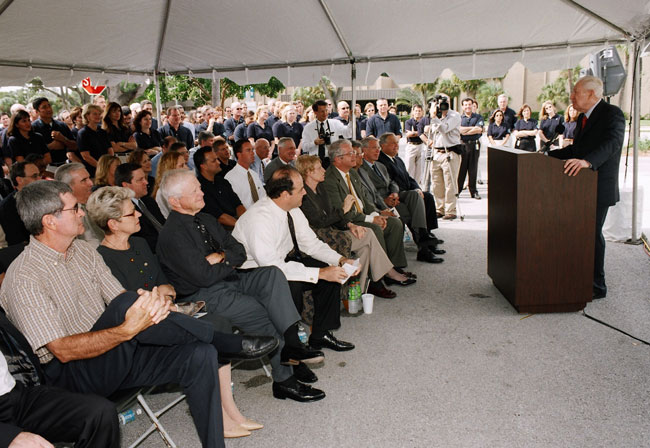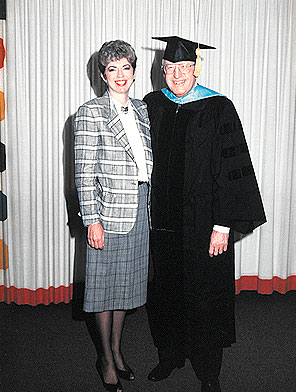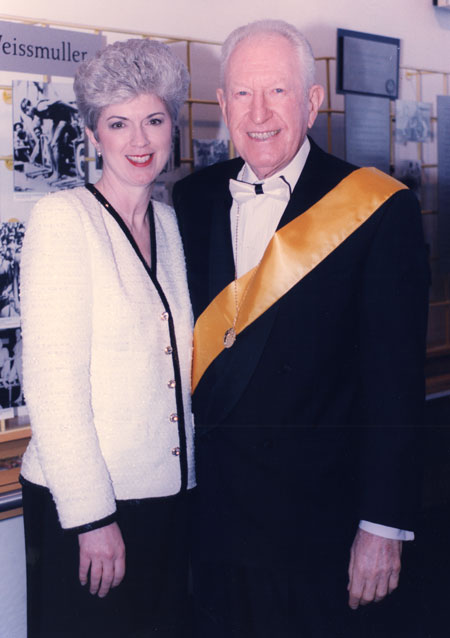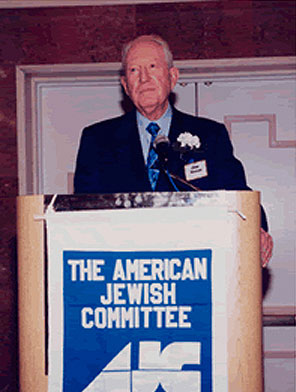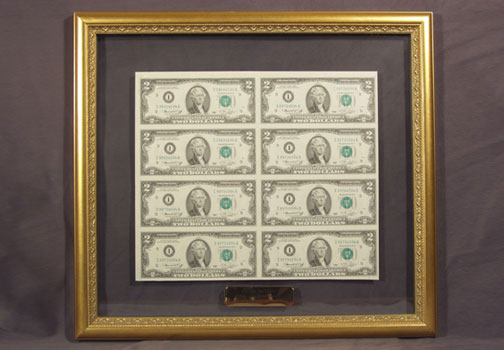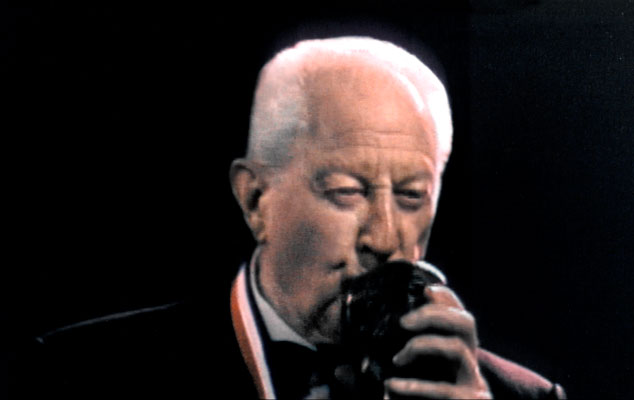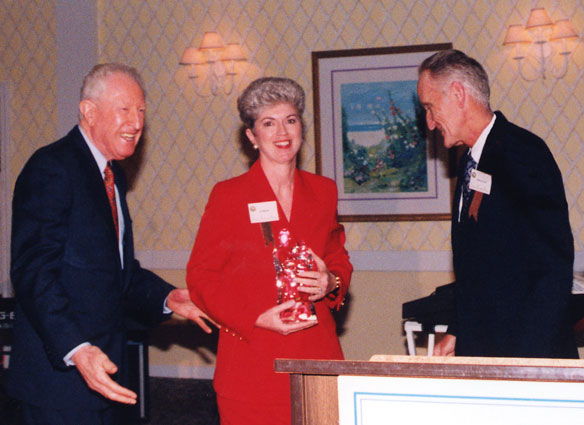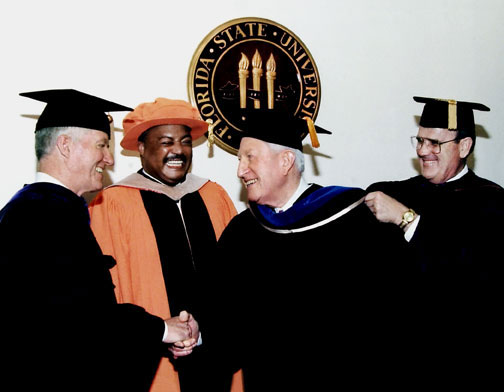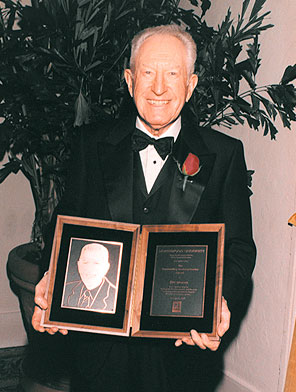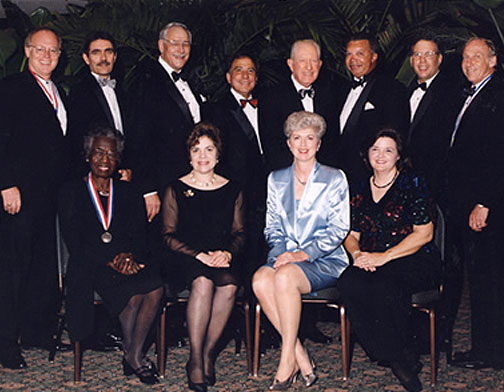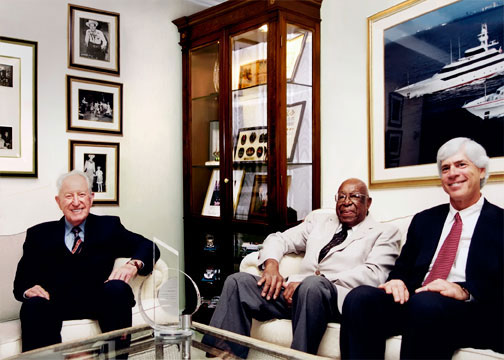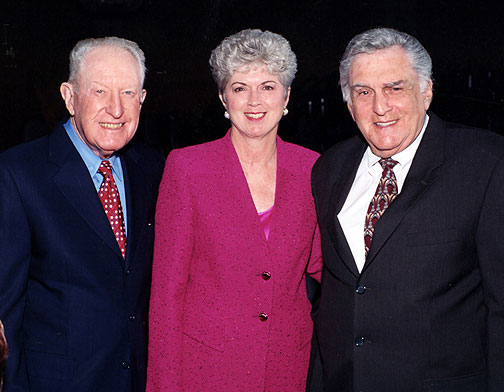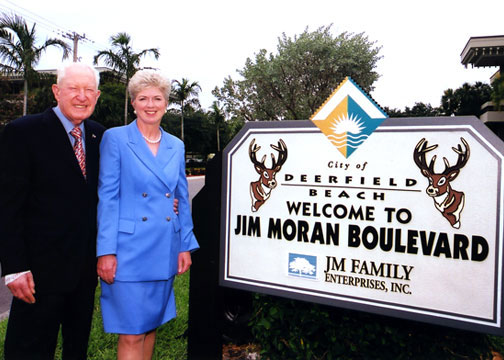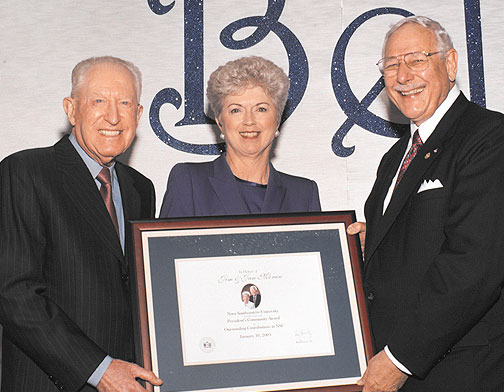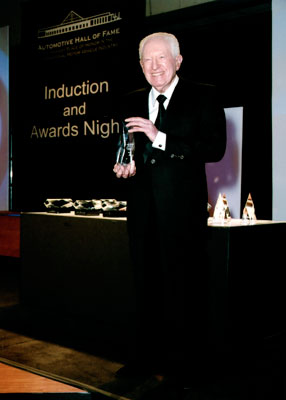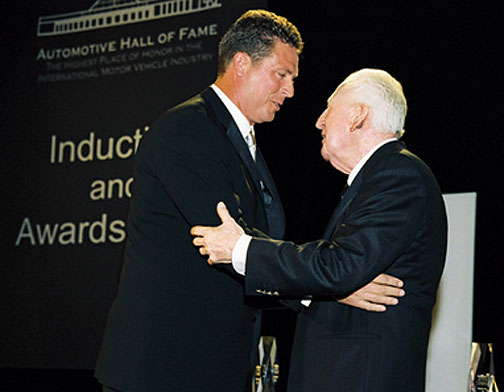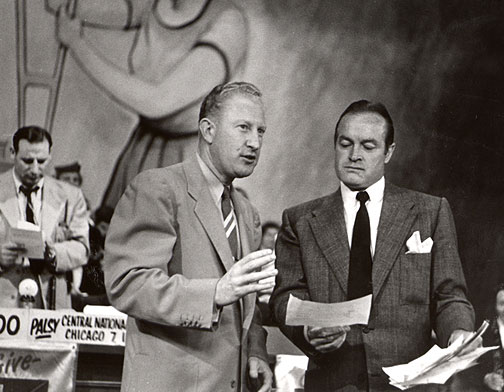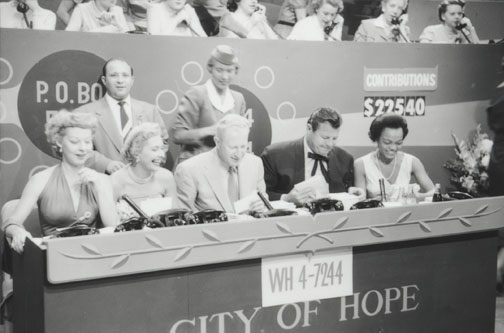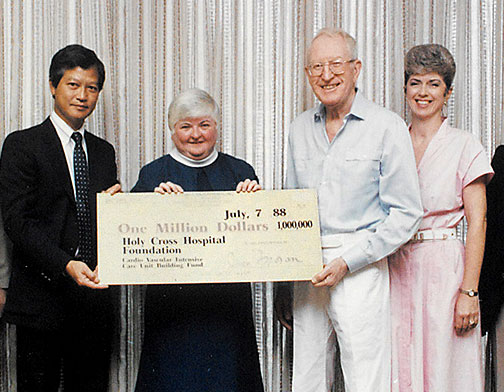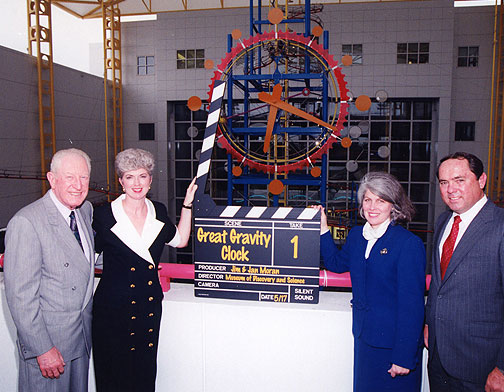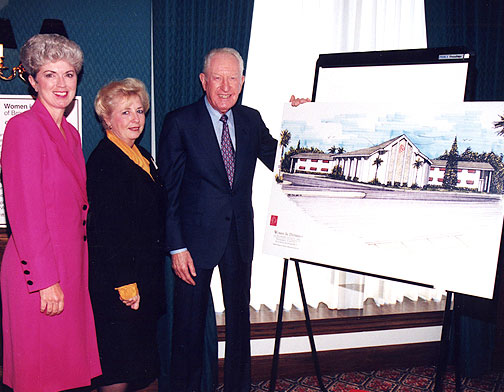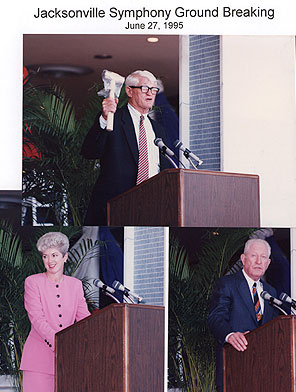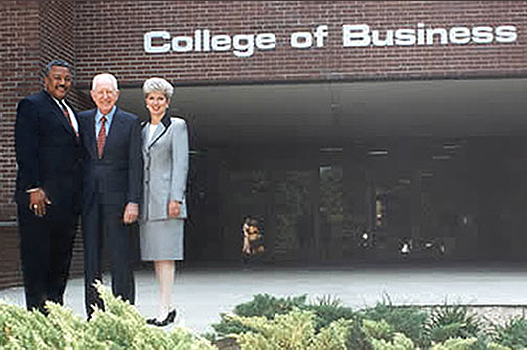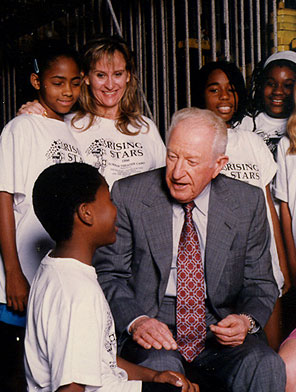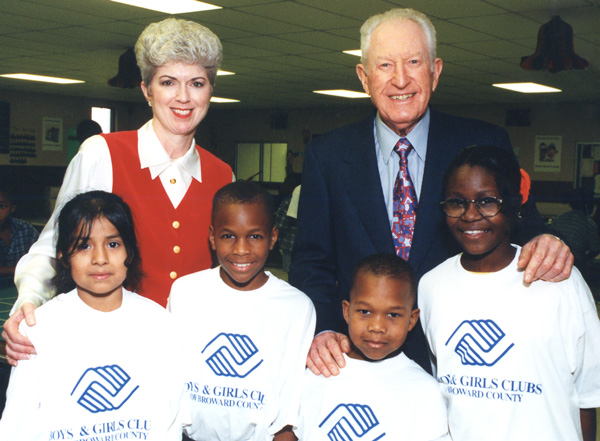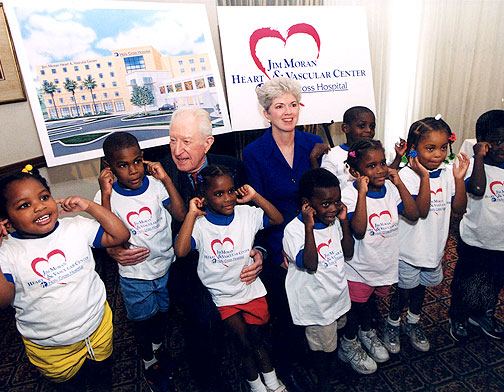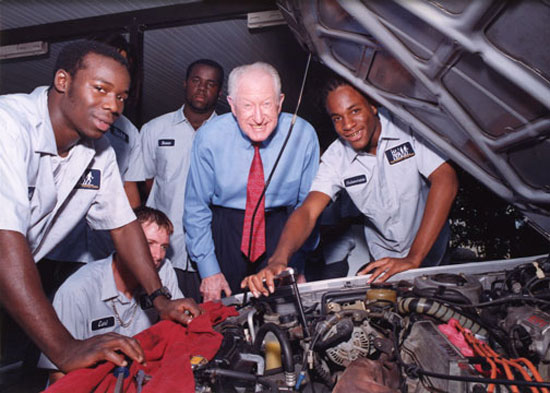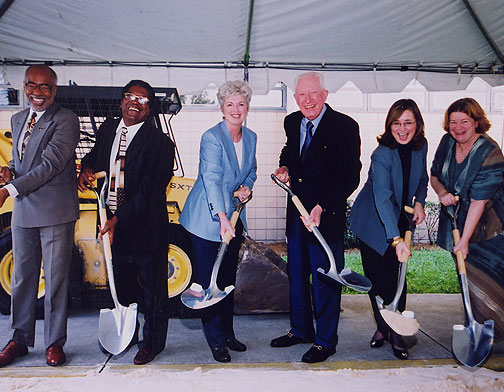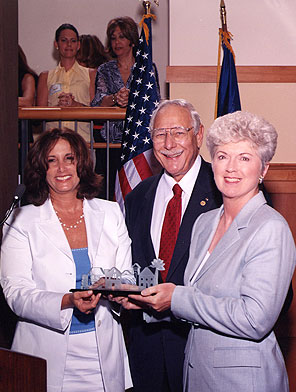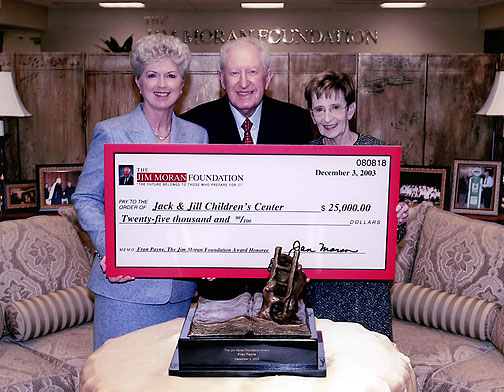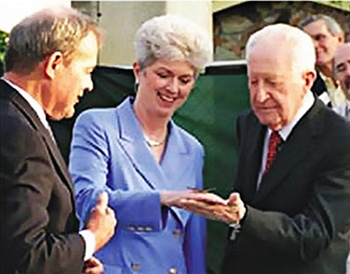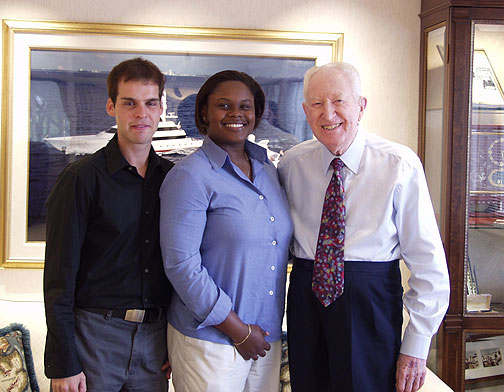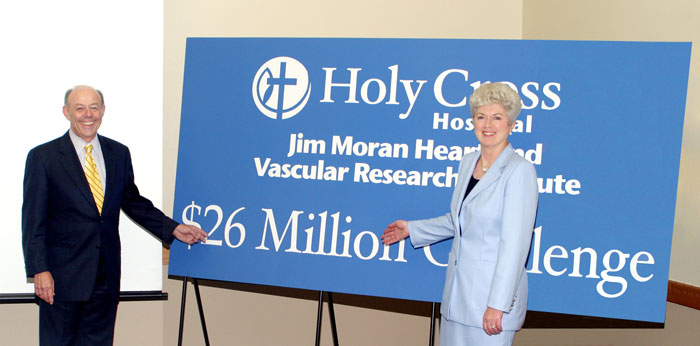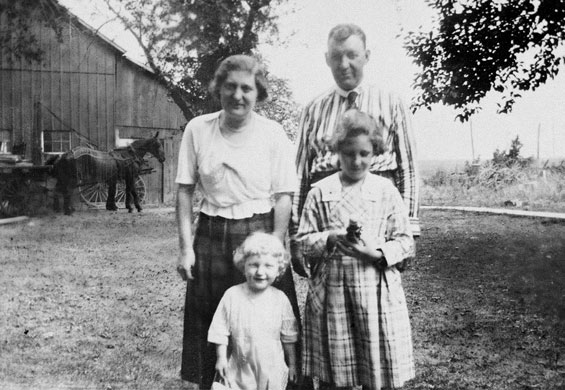
Born into humble beginnings in Chicago, Illinois, on August 8, 1918, Jim Moran often attributed the values instilled by his family as the foundation of his success. “My mother’s rules were simple,” he recalled, “be on time, keep your word, don’t take anything that doesn’t belong to you, and if you do something do it right.” Jim is pictured here as a toddler circa 1920, with his parents, Anna and James, and older sister, Genevieve.
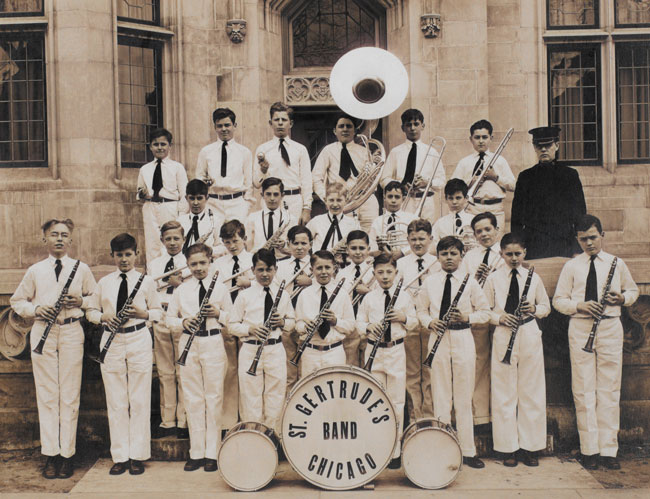
Having already developed an entrepreneurial spirit at the age of seven by selling soda pop at local baseball games and washing neighbors’ cars, Jim Moran (pictured below the tuba player in the St. Gertrude Catholic School band during the early 1930s), never stopped working hard. "When your family doesn’t have much, you’re looking for ways to make money to help out. That’s what drove me in my early years," he later recalled. "I can still remember my mother shaking her finger at me and saying with an exasperated smile, ’Oh, you stubborn towhead!’ But, it probably helped to pay the rent."
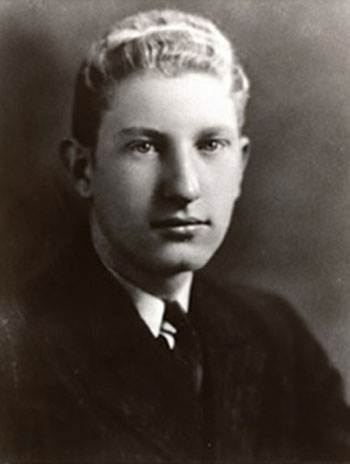
Because his parents valued the importance of a good education, Jim Moran attended Loyola Academy, a Catholic high school for boys, where he graduated in 1936. To pay for his tuition, Jim cleaned classrooms, swept floors and waited tables in the school cafeteria. After his father unexpectedly passed away in 1932, Jim also worked a second job at a Shell gas station to help his mother make ends meet. "I always wanted to be successful or amount to something," he would later write, "there was a burning desire in me to show others that I could do something, even though I had nothing."
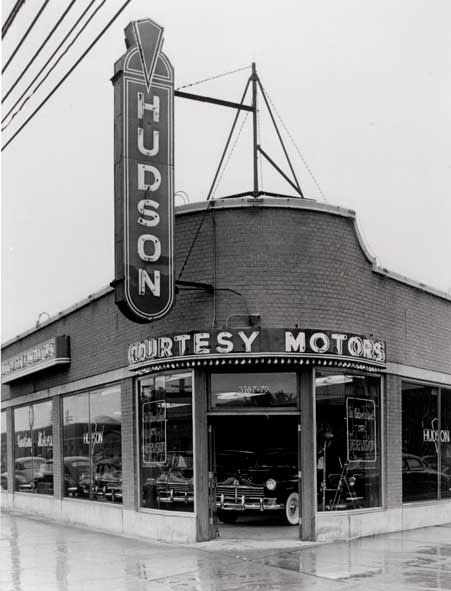
In 1948, Jim Moran opened Courtesy Motors with the business philosophy: "We practice what we preach. When you came to our place you were treated with the utmost of courtesy. You got the best price at a good deal." Within a year, his dealership was the largest-selling Hudson retailer in the world.
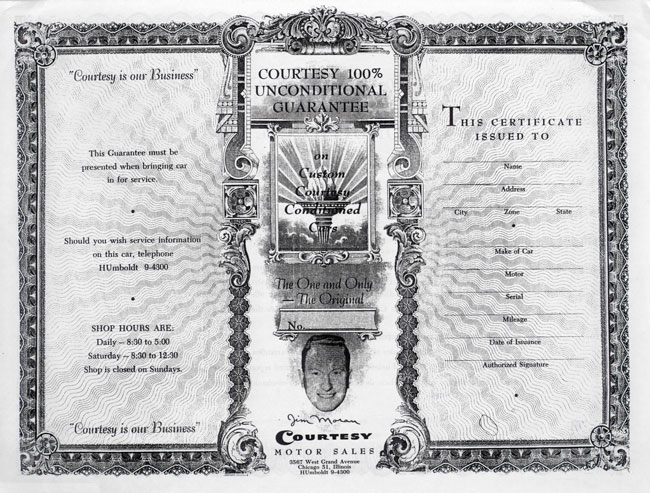
Jim Moran, at his Courtesy Motors dealership, was the first to offer a 100% unconditional guarantee to customers who purchased used cars, with no charge for parts or labor for 30 days or 4,000 miles, whichever came first. Jim believed, "In my business, people can go anywhere to buy a car. I have to give them something better — a better product, a better deal, and that’s not just the price. It’s better financing, better consideration, and better service if they do have a problem."

Jim Moran’s innovative spirit led him to become one of the first car dealers to market new and used vehicles on television in 1948. "One day I went by a hardware store and saw a little box and there was a picture on it. And this picture was coming out of the air," Jim said, recalling the first time he saw a television set. "I looked at it and I thought ‘Man, I can take a car, I can take my dealership right into your home, or your place of business and show you what I’m selling? This is the greatest thing in the world!’ We were the first ones that I know of to put a new car or a used car or to advertise on television in the United States."
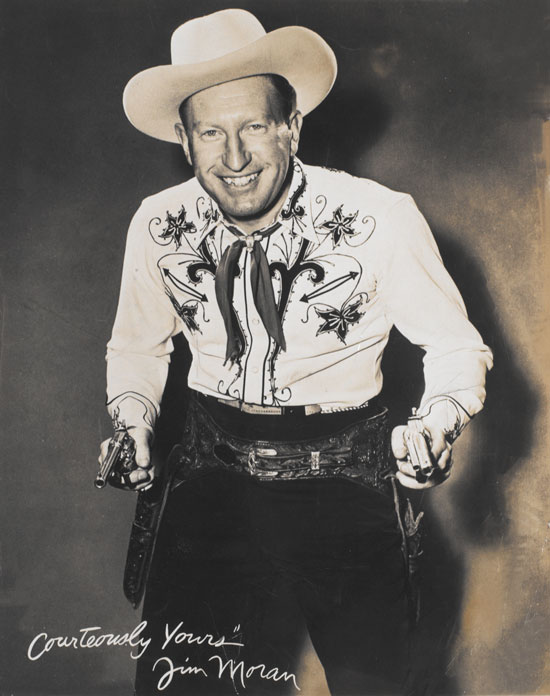
As a new way to promote his dealership, Jim Moran sponsored and hosted two live television shows, The Barn Dance and The Courtesy Hour, both of which featured vaudeville-style entertainment. In addition to his live shows, Jim, pictured in his Barn Dance costume during the 1950s, also sponsored full-length movies on Courtesy Theatre, bringing such blockbuster films as The African Queen to the small screen for the first time. Jim’s knack for showmanship made him a celebrity throughout the Chicago area, where he was recognized as TV’s “Jim Moran, The Courtesy Man.”
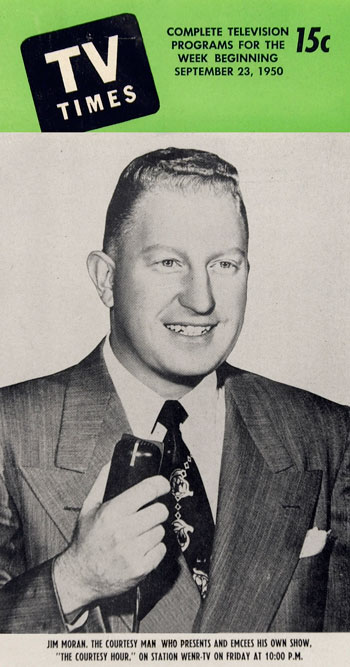
Jim Moran’s Courtesy Motors dealership sponsored three weekly television shows in Chicago during the 1950s. "Jim Moran, The Courtesy Man," was the master of ceremonies and did all the live commercials himself. He became one of Chicago’s most beloved TV personalities and due to his popularity, was featured on the cover of TV Times magazine.
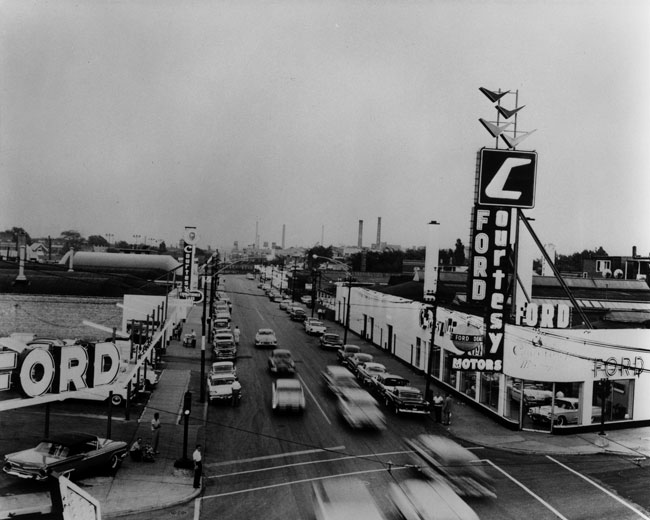
In 1956, Jim launched Courtesy Ford, and within 30 days it became the brand’s highest-volume dealership in the world. This success was due, in part, to offering customers such innovations as "on the spot" new car delivery and short-term lease programs. "[At Courtesy] business was beyond my greatest expectations and the reason was television, but we also followed through on what we promised," Jim said. "The guarantees, the condition of the cars, the exchange privileges, we did what we said we’d do, and that’s an important thing in any business. Do what you say you’ll do, follow through on your customers, and give them their value for the dollar."
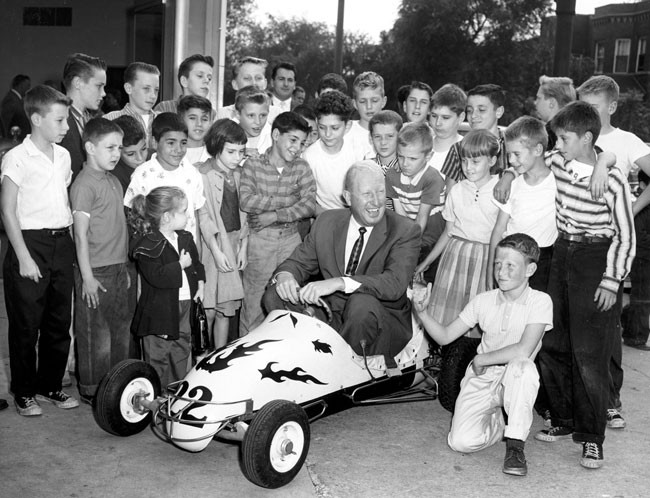
"Special events that would create excitement were always on our minds — especially ones that would please children,” said Jim about Courtesy Motors’ promotions, which included races for kids in the dealership’s service center in 1958 using miniature race cars that were also presented as promotional gifts to customers.
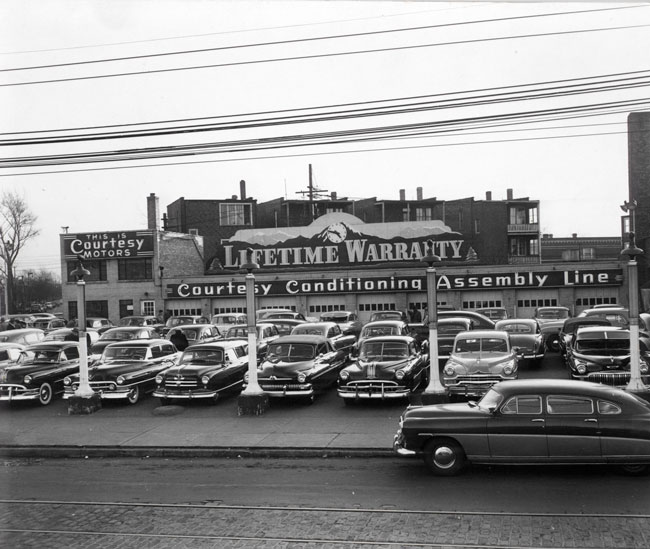
The Courtesy Conditioning Assembly Line at Jim Moran’s Courtesy Motors dealership was the only one of its kind when it opened in 1959, and could recondition as many as 800 cars a month. A forerunner of today’s certified pre-owned vehicle programs, used cars were disassembled and reconditioned using new parts and upholstery. All work was guaranteed with an unconditional warranty, giving customers an affordable alternative to a new car.
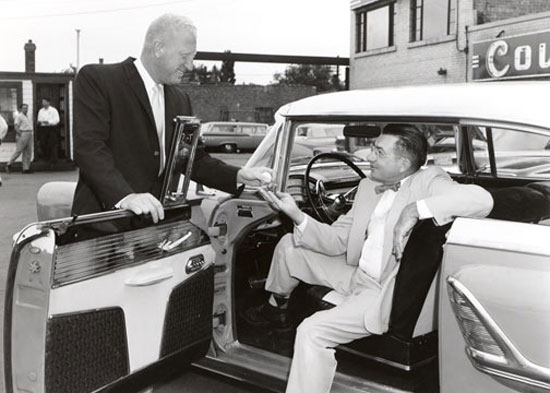
For his 1960 article “I Found New Life For My Old Car,” Chicago Tribune reporter Frank Hughes had his vehicle reconditioned at Courtesy Motors. "When Jim Moran personally delivered my ‘new’ 1955 Mercury to me, it was a thing of sparkling beauty," he wrote. "The motor ticked with the precision and quietness of a watch."
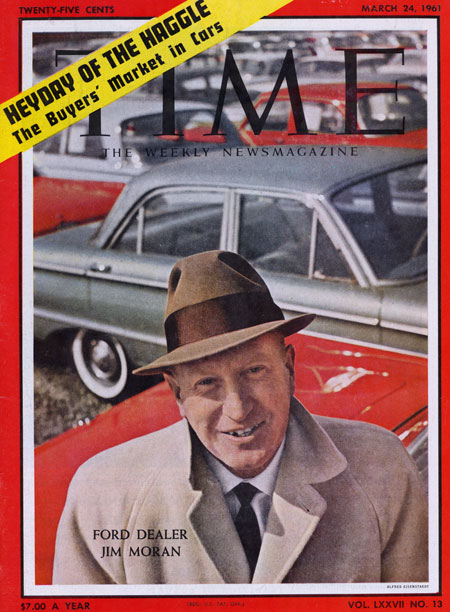
The only car dealer ever to appear on the cover of TIME magazine, Jim Moran was recognized in a March 24, 1961, article for his contributions to the automotive industry and his community. Jim often said things were never quite the same after the TIME cover issue was published, but for him, he just wanted to continue doing what he loved most — selling cars and helping people.
TIME and the RED BORDER design are registered trademarks of Time Inc. used with permission.
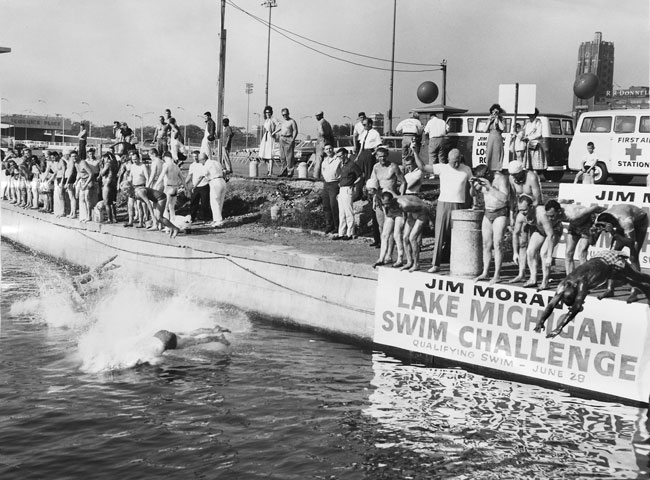
A swimming enthusiast, Jim Moran began sponsoring the annual "Jim Moran Lake Michigan Swim Challenge" in 1957. Recognized as one of the top eleven international open-water swim competitions, the event challenged participants to brave the cold, rough waters of the lake over race routes between 36 and 60 miles. Standing on the seawall just above his name, Jim fired the starting pistol to begin the 1961 qualifying swim.

Jim Moran proudly displayed the winner’s trophy for the 6th Annual Jim Moran Lake Michigan Swim Challenge held in 1962. Olympic gold medalist Greta Anderson won the $10,000 prize by finishing the 50-mile swim to Kenosha, Wisconsin, in 31 hours, setting a world record in open-water swimming. Chicago lifeguard Dennis Matuch claimed the $4,000 prize by completing the 36¾-mile race to Waukegan, Wisconsin, in 21 hours

